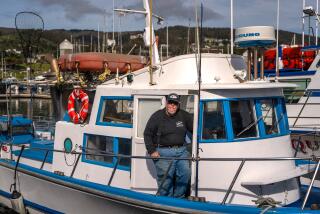Editorial: Like fish? Then there’s good news from California’s waters
When environmental threats emerge, the response is usually predictable. First comes denial, and the assertion that the problem is not serious enough to require action. Then the offending industry claims that it is not feasible, financially or technologically, to fix the problem, and the public raises concerns that prices will rise. Early attempts to fix the problem often fall short because what seemed helpful in theory doesn’t work, leading to claims that the scientists don’t know what they’re talking about.
And yet, from time to time, there is success. The right solution is found, agreement is reached that the problem must be tackled head on, and good things happen. Over the years, smog has been reduced considerably. Some endangered species have been returned to healthy numbers.
Last week, the Monterey Bay Aquarium expanded the list of fish that consumers can feel good about eating. Its Seafood Watch, widely considered the most authoritative source on environmentally safe and sustainable fish, took 15 species off the “avoid” list and upgraded several other species from “good alternative” to “best choice,” an unprecedented improvement. Most of the fish populations that are now believed to be more robust — and that therefore may be bought and eaten responsibly — are found off the coast of California, including lingcod and several kinds of rockfish.
The renewed health of these populations has been attributed to two changes in fisheries policy: the imposition of catch limits, which regulate how much seafood a fishing operation can take, and the creation of protected areas along the coast, where fishing is either banned or severely limited.
In March 2013, the National Oceanic and Atmospheric Administration reported that certain fish populations were increasing, and credited the change to catch limits. Another 2013 study by California marine scientists found that the populations and average size of various types of fish had grown since the state established its first marine reserves.
Meaningful catch limits have been in place only for about a decade, but they’ve produced quick results. Earlier rules, such as minimum size requirements for each species caught, backfired when taking the larger fish out of the gene pool meant that smaller fish predominated and passed on their genes to later generations.
The nation and world are far from restoring thriving fisheries, but scientists and policymakers are clearly on the right track, one that already is benefiting consumers, fishermen and the ocean environment. It’s a lesson worth remembering in the effort to combat climate change, which is a far more complicated problem. Denial, or claims that it will cost too much, will only delay the already challenging work ahead.
Follow the Opinion section on Twitter @latimesopinion
More to Read
Start your day right
Sign up for Essential California for news, features and recommendations from the L.A. Times and beyond in your inbox six days a week.
You may occasionally receive promotional content from the Los Angeles Times.






